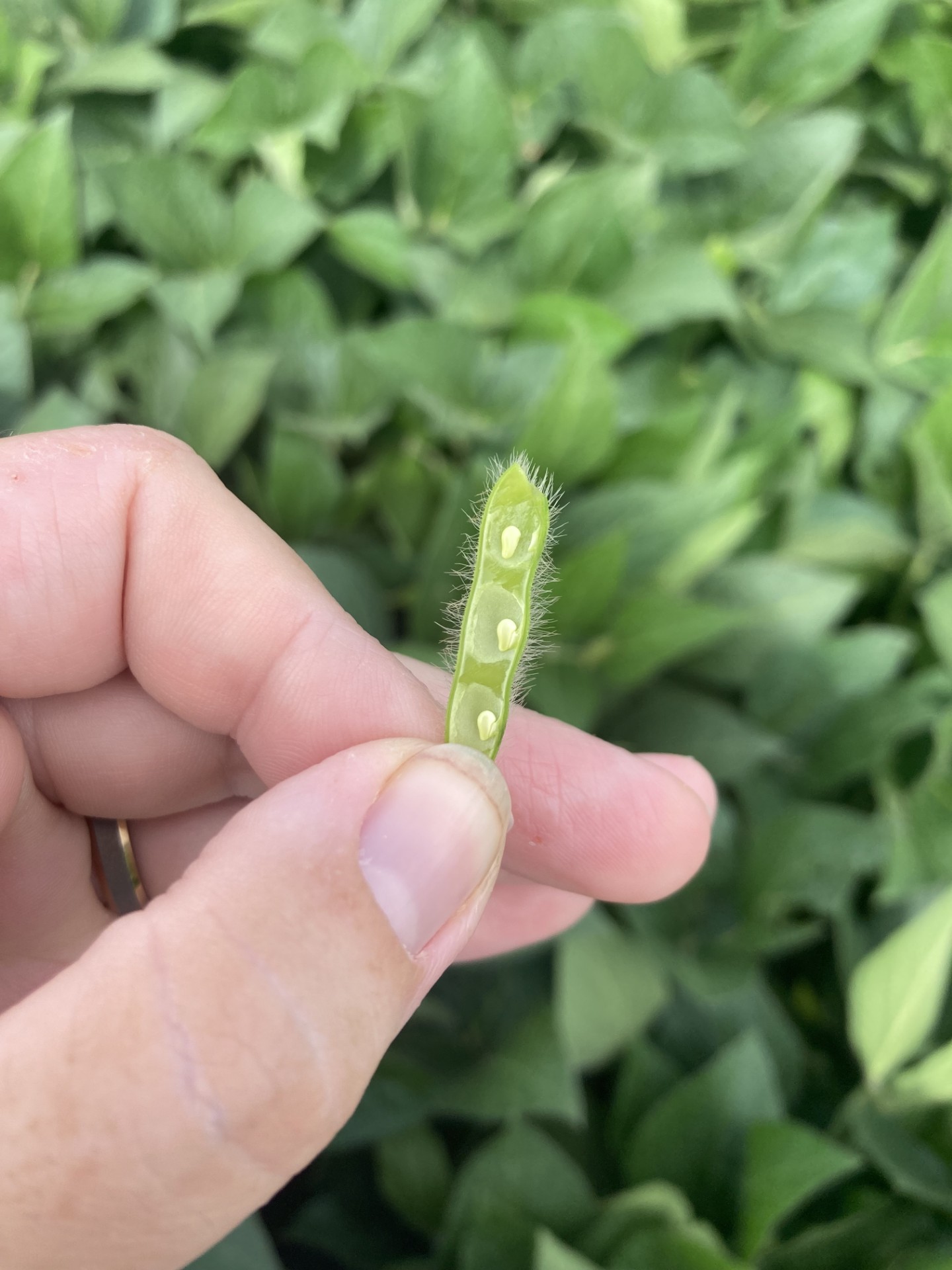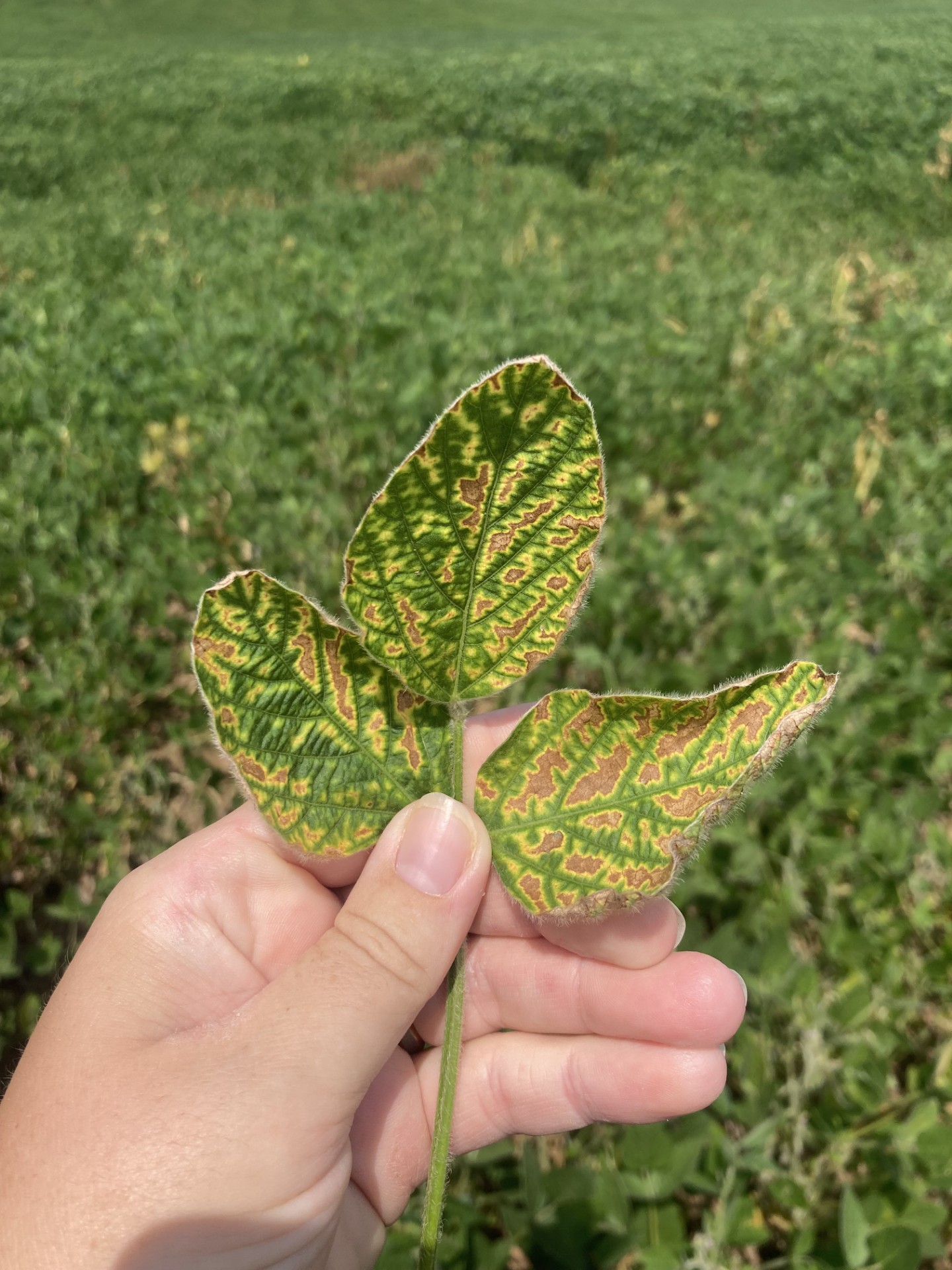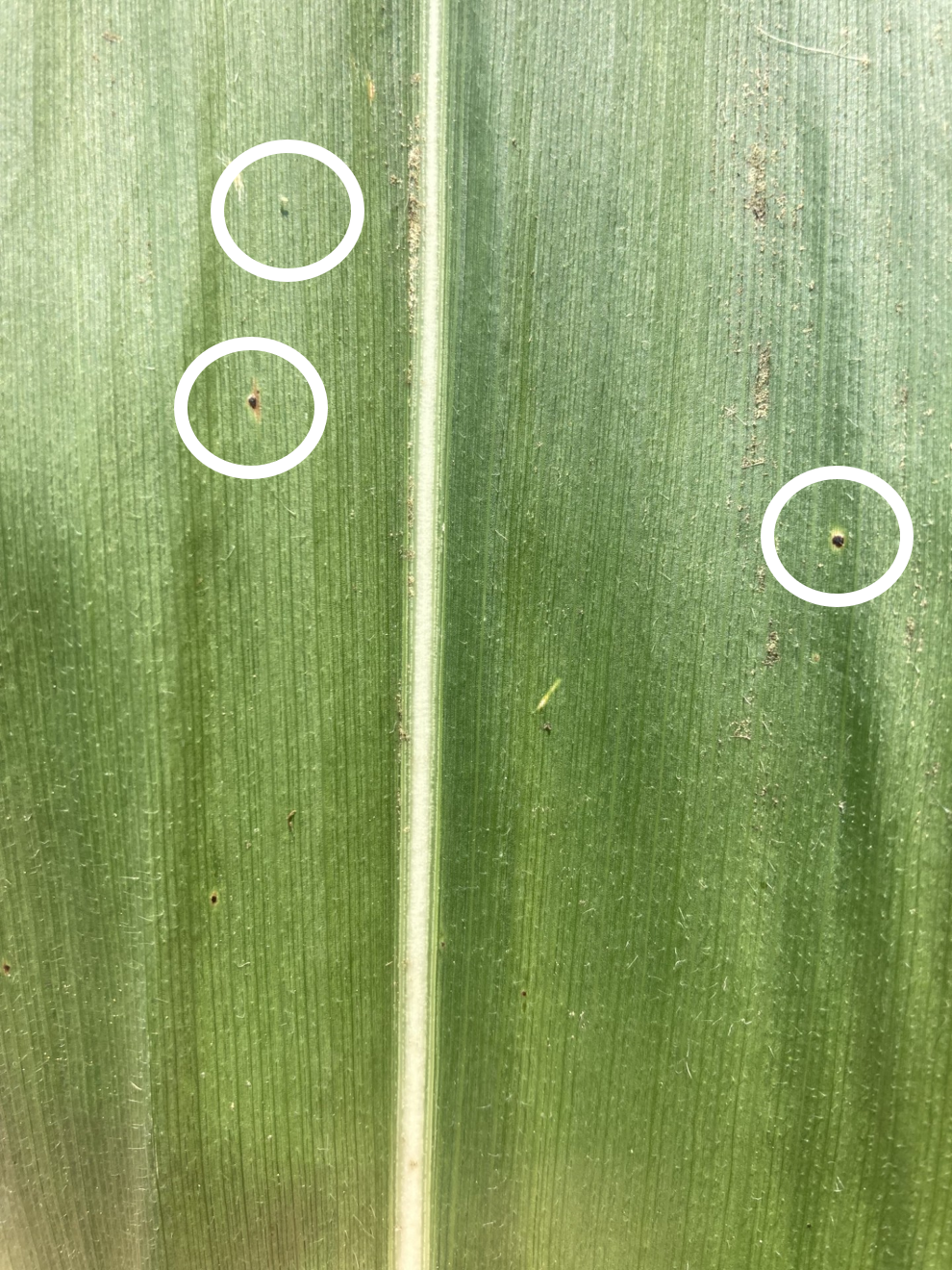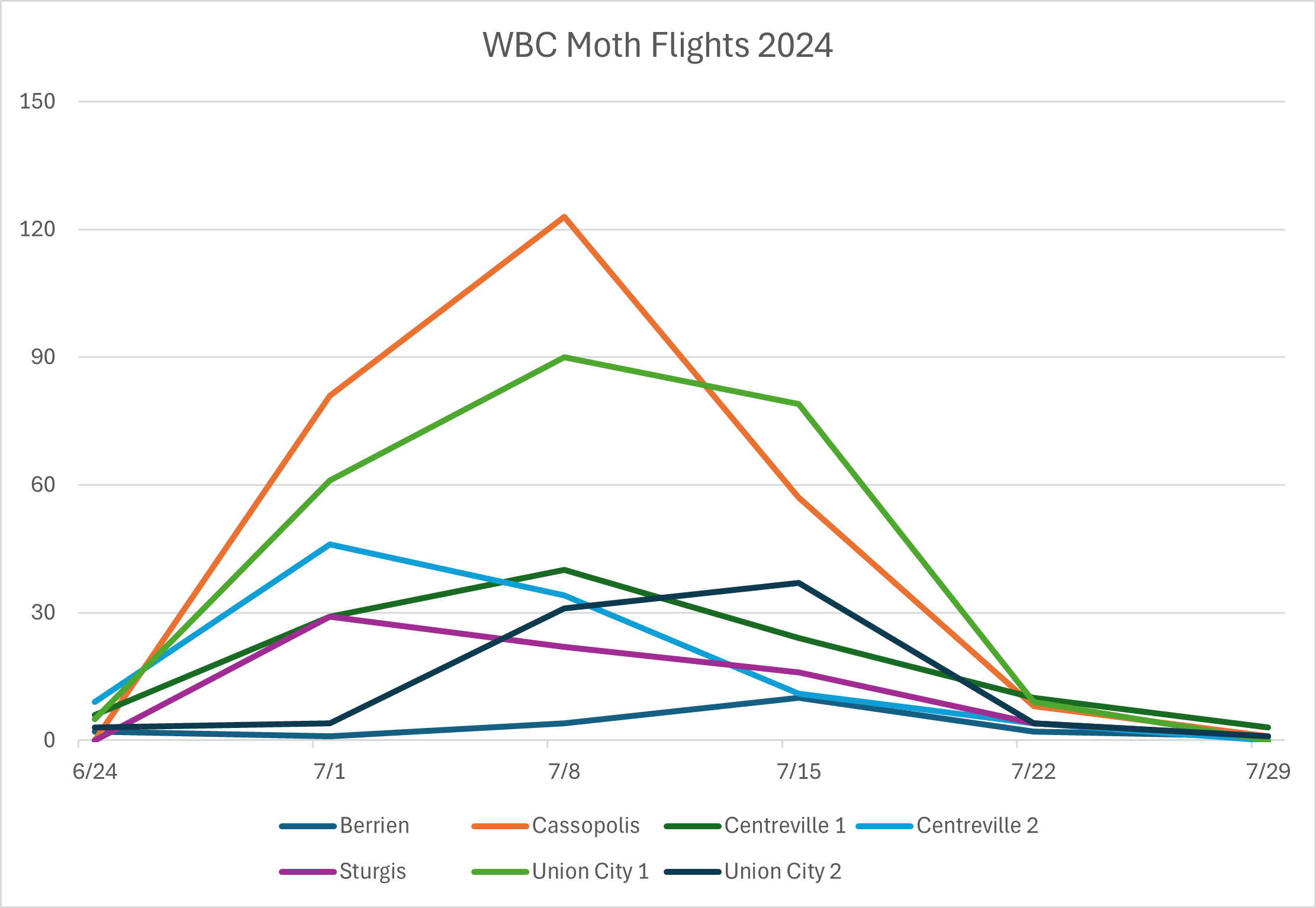Southwest Michigan field crops update – August 1, 2024
Corn leaf aphids continued to settle into corn fields this week. Tar spot is in several counties but at low pressure. Soybean pods progressed toward full seed.

Weather
This past week was mostly hot and humid with little precipitation until Monday and Tuesday, Aug. 5 and 6. We continue to be about a week to 10 days ahead of normal on growing degree days. Michigan received about 10 inches of rainfall overall in the month of July. A weather system will bring precipitation to the state over the next 24 hours. An airmass arriving on Monday, Aug. 5, will cause temperatures to cool considerably. More precipitation is expected to arrive early next week, with an overall forecast of 1.5 inches within the next seven days.


Crops and pests
Soybean pods are between initial formation (R3) and partial seed fill (R5). Phytophthora stem and root rot is a concern after the heavy rains a few weeks ago. The standing water facilitates the travel of zoospores to soybean roots. Phytophthora is recognizable by the presence of a brown stem lesion that begins at the soil line and moves up the stem, but not all infected plants will show the brown lesion—some will simply be yellow or wilted. For more information, check out the article “Soybean Phytophthora stem and root rot resistance genes have become less effective” from Michigan State University Extension.
Minor foliar diseases and pests are present in the canopy. Some flowers are still out in the canopy, but most white mold sprays have been completed by now. Scouting for sudden death syndrome should start at R5 and continue through R6. It’s important that the plants still be in a green stage so that identifying diseased plants is easier. Sudden death syndrome symptoms range from stunted growth to the recognizable leaf pattern of yellow interveinal chlorosis and then necrosis, as shown in the photo below. Areas showing sudden death syndrome symptoms can be sampled for soybean cyst nematode populations and sent to the Michigan State University (MSU) Plant and Pest Diagnostics lab. Sample processing for Michigan soybean growers is funded by soybean checkoff dollars.


Corn is mostly in reproductive stages with ears between R1 (silks visible outside the husk) and R4 (dough). Tar spot is present in low levels in Branch, Calhoun, Kalamazoo, St Joseph and Van Buren counties, but fungicide application decisions should be made based on each field’s condition rather than the tar spot map. The Tarspotter app shows medium tar spot risk throughout most of southwest Michigan for today, Aug. 1.


Corn leaf aphids continue to land in fields and congregate mainly in the whorls. Black winged adults and green wingless adults may both be visible in the same field. The sticky honeydew secreted by the aphids can interfere with pollination but otherwise do not pose an economic threat in most cases. However, there is potential for them to transmit viruses.
Western bean cutworm peaked two to three weeks ago. For most areas, peak flight was the week of July 8, as shown in the graph below. Corn that is close to tasseling or freshly tasseling is most attractive for egg-laying female moths. When scouting, put the sun behind the leaves and watch the upper third of the canopy for egg masses. It takes about a week for egg masses to hatch, at which point the larvae will travel to reproductive tissues. Larvae or their entry holes may be visible, but they hide to feed on reproductive tissues, so larvae can be difficult to see without opening up the plant. The threshold for western bean cutworm damage is 5% of plants with egg masses or larvae. This is a cumulative threshold, meaning that findings add up from week to week.

Potato harvest of fresh crop chippers continued. Early russet harvest will begin next week. Vine kill applications began almost a month ago but will pick up over the next week.
Weekly water use
|
Estimated weekly crop water use for field crops in Michigan (in/week) |
||||
|---|---|---|---|---|
|
Crop |
Growth stage |
Constantine |
Entrican |
Hart |
|
Corn |
V12 |
1.00 |
1.22 |
1.26 |
|
VT |
1.10 |
1.34 |
1.39 |
|
|
Silk, Blister, Dough, Begin Dent |
1.10 |
1.34 |
1.39 |
|
|
Full dent |
1.00 |
1.22 |
1.26 |
|
|
Soybeans |
R1 Beginning bloom |
1.00 |
1.22 |
1.26 |
|
R2 Full bloom |
1.10 |
1.34 |
1.39 |
|
|
R3 and R4 Beginning Pod/Full Pod |
1.10 |
1.34 |
1.39 |
|
|
R5 Begin seed/Full seed |
1.10 |
1.34 |
1.39 |
|
Corn and soybeans are currently in their early to mid-reproductive stages, making it crucial to meet their water needs. Soybeans are particularly sensitive to water stress during these stages when their water use peaks. Insufficient water during these stages can significantly reduce the number of seeds per pod or seed size, thereby lowering yield potential. Similarly, water stress during corn's tasseling and silking stages can decrease yield. To optimize irrigation efficiency during these critical periods, aim to apply five to six days' worth of crop evapotranspiration, typically between 1 and 1.25 inches, depending on weather conditions. Utilize the water use table provided above as a guide to align your irrigation rate with the crop’s water needs, accounting for any rainfall and leaving room for future precipitation events.
The table above presents estimated crop water use for various field crops across three locations in Michigan. This data helps irrigation management decisions by showcasing potential crop evapotranspiration, calculated based on reference evapotranspiration and crop coefficients for each crop growth stage. It is crucial to note that crop water use values vary across regions due to differences in weather conditions, growth stages, agronomic practices and soil properties.
When using these values for irrigation scheduling, be mindful that they assume all applied irrigation water will be utilized by the plants without any loss. Additionally, these values do not account for any precipitation that may occur during the week of calculation.
For more tools and information on irrigation scheduling tools, please refer to: Irrigation Scheduling Tools.
Reference evapotranspiration data was obtained from MSU Enviroweather, which also offers a model for determining potential crop evapotranspiration. To access this tool, visit Enviroweather, click on "Crops," select your crop and use the potential evapotranspiration tool by choosing your nearest weather station, the latest date of interest and other crop information.
Field Crops Virtual Breakfast Series
.jpg?language_id=1)
Cover crops after wheat, presented by Brook Wilke, was the topic for the MSU Extension Field Crops Virtual Breakfast this week. Wheat’s earlier harvest time gives an increased window for establishing a cover crop, but there are many considerations for cost, which species to use, when to plant and more. Recordings of this and all the Virtual Breakfast meetings are closed-captioned and available at the Field Crops Virtual Breakfast webpage and the MSU Extension Field Crops Team social media platforms: Facebook, Spotify, YouTube, Apple Podcasts and Twitter.



 Print
Print Email
Email